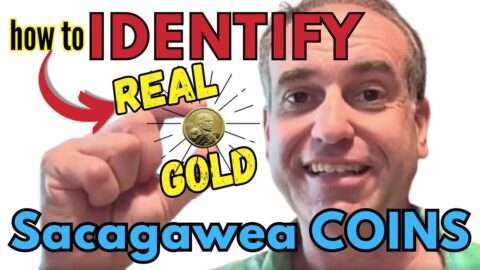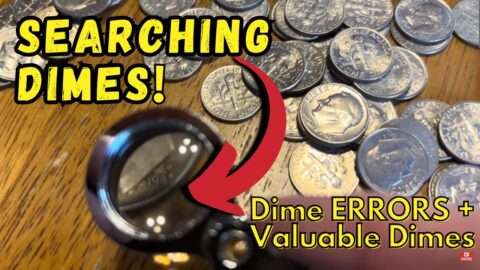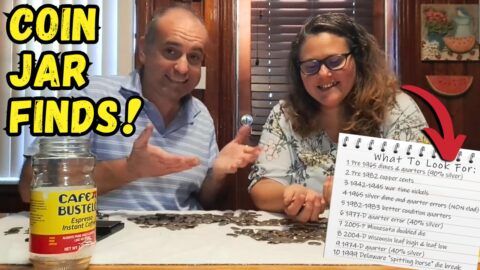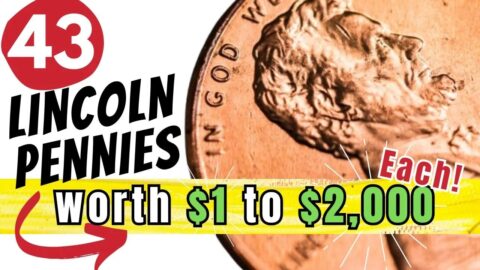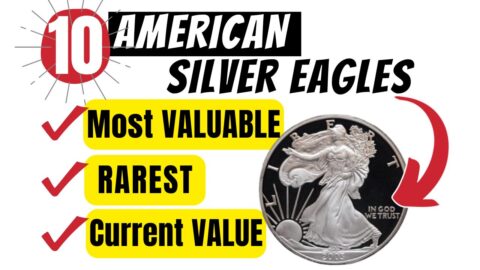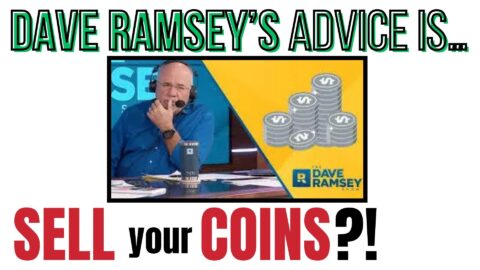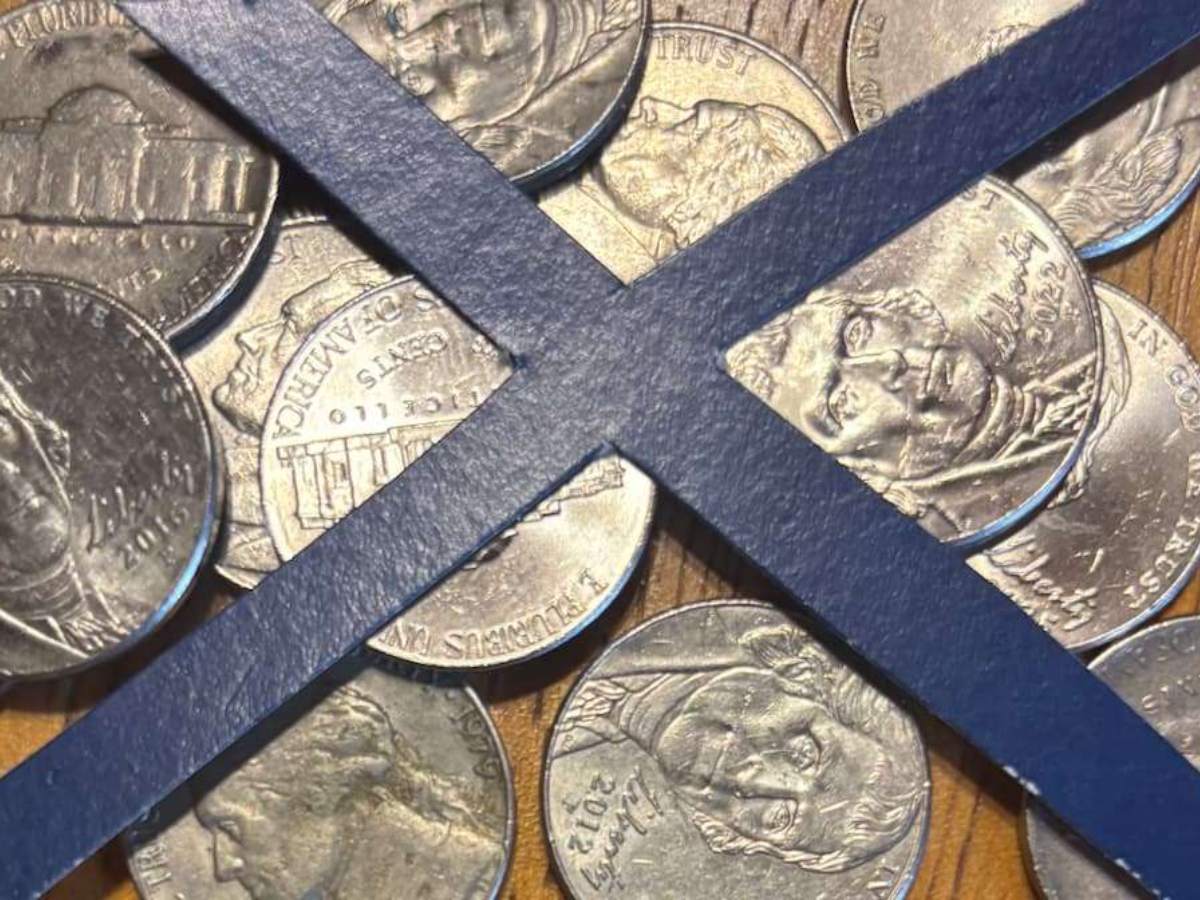How to spot the rare 1972 double die Lincoln cent, how much it’s worth, and why this rare penny error is so valuable.
⚡TIMESTAMPS FROM THE VIDEO⚡
00:00 Intro about the 1972 double die penny
00:21 1955 doubled die Lincoln cent explained
00:40 You can see the doubling with the naked eye
01:18 Value of a 1972 double die penny with light wear
01:31 Look for this rare coin in circulation today
01:41 Look for these rare pennies in rolls from the bank
01:51 My entire set of Lincoln cents in a Dansco album
02:20 Importance of the 1972 doubled die Lincoln cent
02:53 Mintage numbers explained
03:16 Must-haves for your Lincoln cent collection
04:34 Value of a 1972 double die penny with more wear
05:16 Guide Book of Lincoln Cents by Whitman Publishing
05:59 A quote from the book about ’72 doubled die cents
07:14 Summary of the 1972 double die penny
============================
TRANSCRIPT:
Hey! This is Josh with The Fun Times Guide. And today we’re going to talk about the 1972 double die Lincoln cent.
Now, this is a coin that is one of the most popular die varieties – not just even in the Lincoln cent series, but among ALL die varieties among U.S. coins!
Some have said that if not for the 1955 doubled die Lincoln cent, this would probably be THE big double die in the Lincoln cent series worth collecting.
It’s certainly the 2nd-most for sure behind the ‘55 doubled die.
And one reason why it’s so popular is the doubling is just SO prominent! You can see it with the naked eye.
But as you might be able to see here… I hope you can see it through the magnifying glass – this is a 10x coin loupe – that the doubling REALLY is prominent on the obverse.
And my gosh, here you know the glare is really strong on this. But maybe you can make it out here – in the legend “LIBERTY”… the motto “In God We Trust”… and the date 1972.
There are at least 10 different kinds of 1972 double die Lincoln cents.
This is the Class 1 (or Type 1), which has the most dramatic magnitude of doubling on the obverse.
This coin’s worth between $300 and $500 in typical uncirculated condition.
THIS is a “Mint State 64 RED” certified by Professional Coin Grading Service. It’s worth closer to $750 right now.
But the thing about this coin is… despite how rare (and really how valuable) it is, you CAN find these coins in circulation!
This is why I like to go through penny rolls looking for doubled dies like the ‘72 or the ‘55.
I mean to me… even though… as you see here I have a Dansco set of Lincoln cents. And there’s actually not a slot or portal for the ‘72.
Here I’ll pan in here on where the 1972 would go. It would go in here somewhere.
A lot of albums don’t have a slot for the 1972 double die Lincoln cent. Or the ‘55 for that matter.
You’ll see here on a couple of pages back… or one page back… there’d be a slot here if they had it for the ‘55 double die. There’s not a space there for it.
But the thing about the major doubled dies is that they’re so popular. And they’re such an important part of the American numismatic canon that folks who specialize in a series (like Lincoln cents for example), they will pursue the 1972 doubled die or the ‘55 doubled die.
They’re very important coins – not just because of the fact that they have such prominent doubling. But if you think about it, a lot of folks actually know about these coins beyond the 4th wall of numismatics. So that’s why coins like these have such great value.
There actually were thousands of these coins made. So you’d think, “Oh, they’re common.” And in the absolute sense, they probably are “common”. But the demand for these coins is so much greater that there aren’t enough to satisfy demand. And thus why these doubled dies are so expensive.
Having said all that, this is a coin well worth pursuing. At least in my opinion anyway.
I can’t imagine having a Lincoln cent set like this that goes back to 1909 and includes the famous 1909-S VDB Lincoln cent. Or the 1914-D Lincoln cent. Both of these very scarce key coins. The 1922 plain variety – which is itself in fact a variety like the doubled die here.
The question often is, “Why would an album have a slot for the ‘22 plain but not, say, for a doubled die like this?” The answer is one I don’t have.
That’s why I still collect these coins even though the albums won’t require it. To me, it’s an important addition to any nicer Lincoln cent collection – which I hope I’m working toward here.
But yeah, I mean.. .pennies I’ve gotta tell you. And I know a lot of folks who say, “They’re not called pennies. They’re called cents!”
Well, I’m sorry. Look, I’ve been collecting coins for over 30 years. I call them pennies. Most Americans call these coins pennies. And if you are a penny enthusiast… (I’ll just say it, a Lincoln penny enthusiast), coins like the 1972 doubled die – which is a valuable double die variety – are worth seeking! And certainly are prized possessions among Lincoln cent collectors.
Now if you find a 1972 doubled die Lincoln cent in circulation, how much is it worth?
That all depends. You know, we’re talking about condition being kind of the main factor in what these coins are worth.
Again, this is a “64 RED”. So we’re talking around $750 for this specimen here. That’s in 2025 dollars.
The values might go up or down in the future.
If you find a circulated 1972 doubled die, you’re looking at at least a couple hundred dollars. Even with light wear, these coins command extreme premiums. And that’s why they’re worth looking for.
But I just wanted to take time to show you the ‘72 doubled die Lincoln cent. They are coins that garner a lot of attention, that many collectors want, and certainly a plethora of Lincoln cent enthusiasts – and I call myself one. My first coin I ever collected was a Lincoln cent. And to this day, 30+ years on, it’s still my favorite series.
I even have a book here by Whitman Publishing called, “A Guide Book of Lincoln Cents”. It’s a very thorough tone. It goes through the entire series of Lincoln cents. This is actually an older edition from like 2008. Whitman has since updated this guide I think at least twice.
But there is in fact here a little bit of commentary about the ‘72 doubled die Lincoln cent – which I’ll share with you right now. As you flip through the pages of the book right here. And I’ll see if I can find the page. I know I’m right in the neighborhood. Right here we have a little commentary about the ‘72 doubled die Lincoln cent.
“Creating a sensation soon after it was released, this variety became an instant must-have coin for thousands of collectors. John Wexler (he’s a fantastic and well-respected variety specialist and expert) suggests that 75,000 were released. Many more than the 20,000 estimated by Sol Taylor (he’s another numismatic scholar). No information has been seen as to why this die was removed from use. Today this is one of the most popular varieties in the Lincoln series. Multiple genuine obverse dies exist for this issue. Counterfeits are also common. My advice is to buy coins certified by the leading services.”
My, of course, referring to the author himself – Q. David Bowers, a well respected… probably THE most prolific numismatic expert and scholar of our time. He’s written dozens and dozens of books – including this one here that came out some years back. It’s forwarded by Charles D. Doughtry – a friend of mine. Really a keen Lincoln cent expert. He loves his die varieties too. This is a book worth having in your library if you love Lincoln cents or even just have a passing interest in the series.
But anyway, I hope you’ve enjoyed this little video here about the 1972 double die Lincoln cent.
It’s one of my favorite coins and I think it will be yours too – especially if you can find a way to include one in your collection of Lincoln cents.
So, this has been Josh with The Fun Times Guide. Thank you for your time. Please “like”. Comment down below about YOUR favorite Lincoln cents or if you have a love yourself of the ‘72 doubled die Lincoln cent… or other doubled dies in the series.
Thank you for watching!

